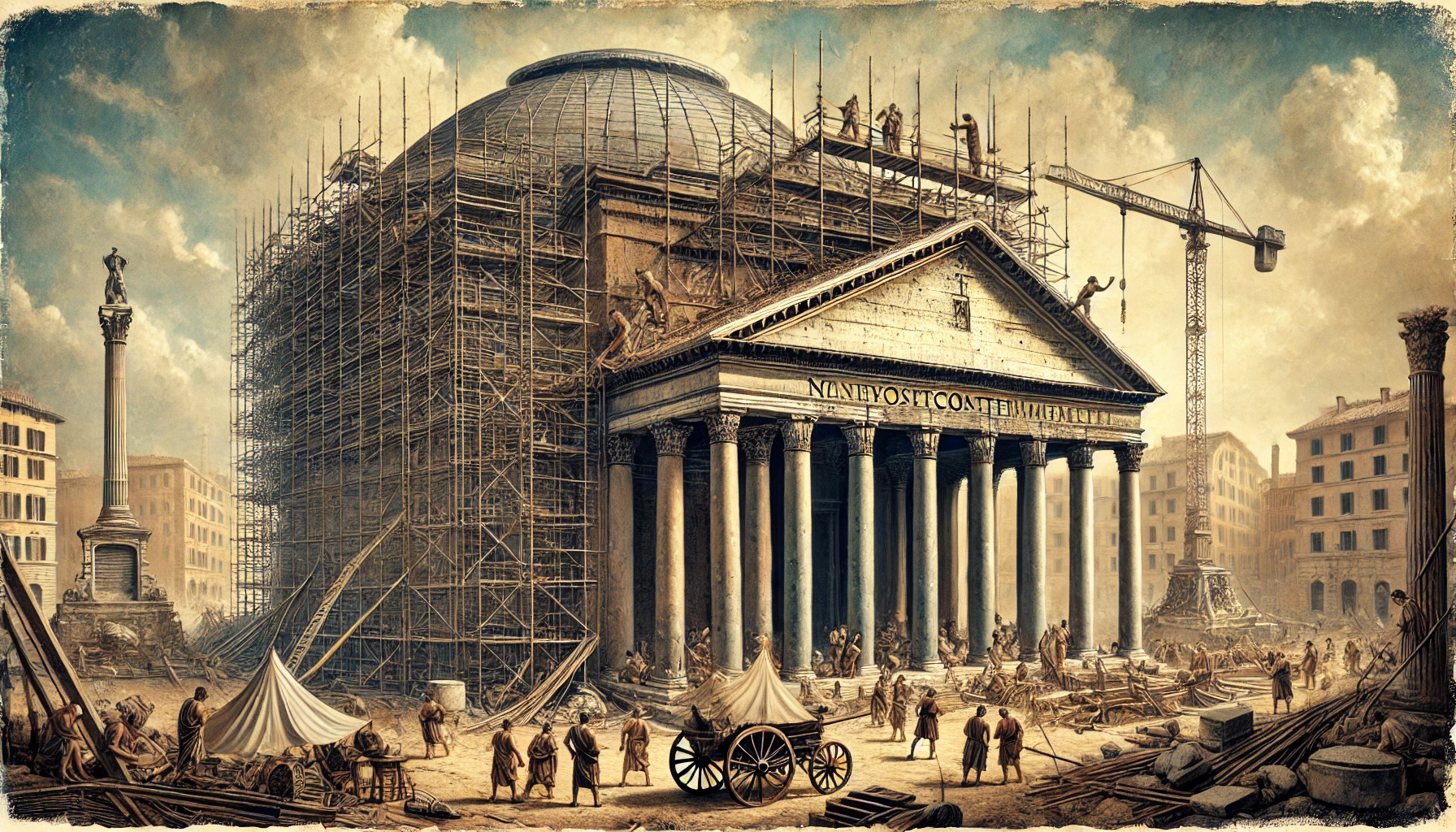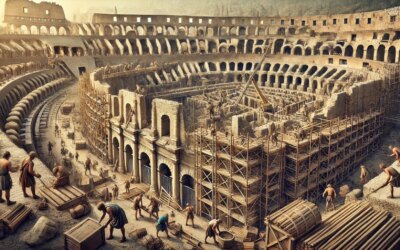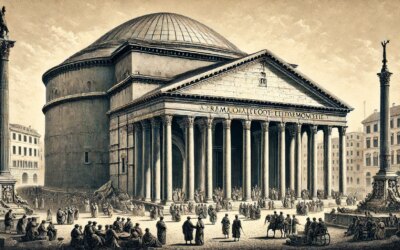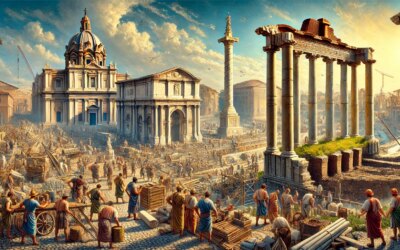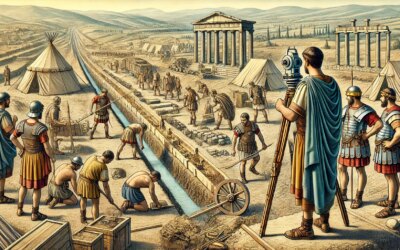Introduction
Among Rome’s many architectural wonders, the Pantheon stands as one of the most remarkable achievements of ancient engineering. Constructed during the reign of Emperor Hadrian (118–125 CE), this temple dedicated to all gods remains the best-preserved monument of ancient Rome. Its awe-inspiring dome, an engineering feat even by modern standards, has influenced architects for centuries. But how was it built, and what makes it such an enduring masterpiece?
The Origins of the Pantheon
The Pantheon we see today was not the first structure to bear that name. The original temple, commissioned by Marcus Agrippa in 27 BCE, was destroyed by fire. A second version, rebuilt by Emperor Domitian, also perished in a fire. The third and final iteration, the one that survives today, was built under Hadrian. Unlike many emperors, Hadrian did not inscribe his own name on the building but instead retained Agrippa’s original dedication, a mark of respect for Rome’s past.
Engineering and Construction
The Pantheon’s construction pushed the limits of Roman engineering. The temple consists of three main sections: the large portico with Corinthian columns, the rectangular intermediate block, and the vast rotunda crowned by the iconic dome. The use of Roman concrete, a revolutionary material, allowed builders to create structures far larger than those made with traditional stone.
One of the most remarkable aspects of the Pantheon is its unreinforced concrete dome, which remains the largest of its kind in the world. The builders used a clever mix of materials, incorporating lighter volcanic pumice near the top to reduce weight. The oculus, a 9-meter-wide circular opening at the dome’s center, not only provides natural light but also alleviates stress on the structure.
The Purpose of the Pantheon
Originally, the Pantheon served as a temple to all Roman gods. Its unique circular design and massive open space created an atmosphere of divine grandeur. The building’s proportions are carefully calculated—the diameter of the rotunda is exactly equal to its height, forming a perfect sphere. This harmonious design was intended to reflect the heavens and reinforce Rome’s connection to the gods.
The Pantheon’s Legacy
The Pantheon’s influence on architecture is unparalleled. During the Renaissance, architects such as Brunelleschi and Michelangelo studied its dome to create their own masterpieces, including the dome of Florence’s cathedral and St. Peter’s Basilica in the Vatican. Its innovative use of concrete construction techniques laid the groundwork for modern engineering principles.
Today, nearly two millennia after its completion, the Pantheon remains an active place of worship and a major tourist attraction, demonstrating the durability and ingenuity of Roman engineering.
Conclusion
The Pantheon is more than just a building; it is a testament to the ingenuity, ambition, and vision of ancient Rome. Its construction set new architectural standards, and its continued existence serves as a bridge between antiquity and modern civilization. Few structures in history can claim such an enduring legacy.

